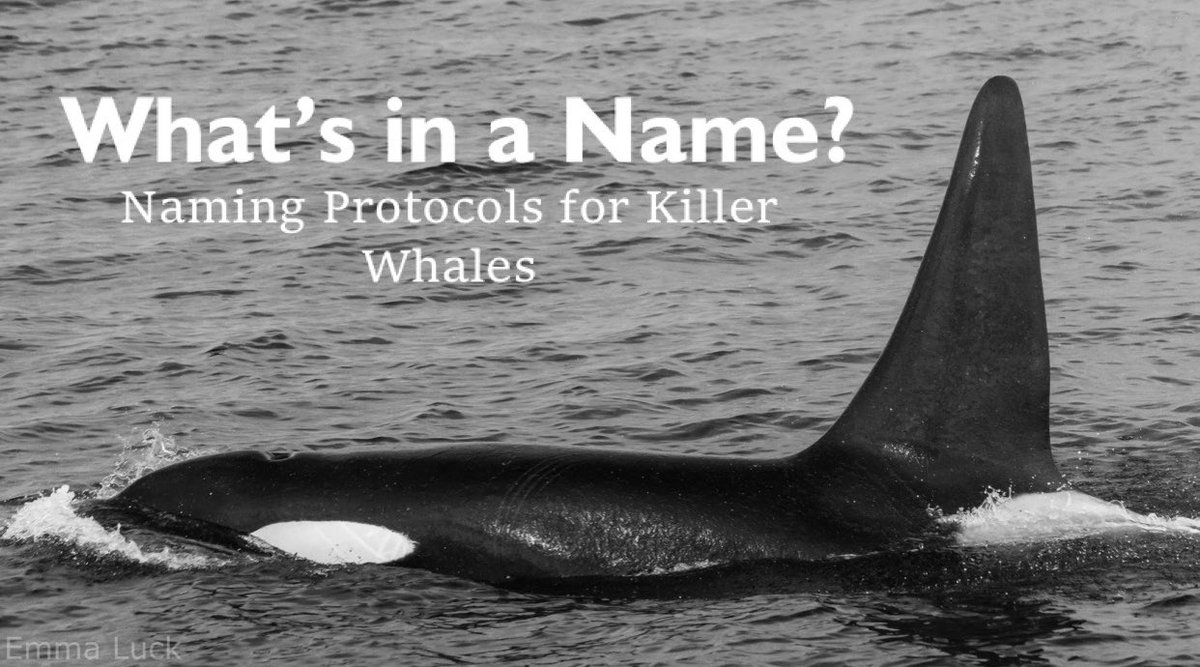Have you ever seen a killer whale referred to by a string of letters and numbers, such as AP18 or AT186? Have you ever wondered what those letters and numbers really mean? A thread:
Alphanumeric designations, unique combinations of letters and numbers, are vital for identifying individual killer whales in the field. These “names” can provide information about population type and family relations.
The late Dr. Michael Bigg was the first to come up with a naming system for the northern resident killer whales, and it was soon adopted for the southern residents and Alaska residents.
Each pod is designated with a letter, such as “A.” The first whale identified in that pod, for example, is called A1, and then subsequent identifications and births follow in numerical order.
But there are only so many letters in the alphabet and there are numerous pods, so in Alaska, to avoid confusion with southern populations, an extra “A” was tacked on the beginning to designate them as an Alaskan pod. This is why we have AA, AB, AD pods, ect.
West Coast transients are named differently. Because they don’t follow the pod structure of residents, a new system was needed. In the beginning, the transients were named much like residents, though all had “T” at the beginning of their names.
When these “original” females started having babies, their offspring were named in a way that identifies their maternal line. For example, the first calf of T065 is called T065A. Her first calf would be T065A1, and so on.
After multiple generations, the names can get quite long! Currently, the longest west coast transient names belong to 4th generation calves such as T109A2A.
What about nicknames? Whales are given nicknames often based on locations where they live, physical characteristics, or families of whales can share a name theme (think of “The Cookies” of the southern residents, such as J22 Oreo, J34 Doublestuf, and J38 Cookie).
In Alaska, they are named primarily by the North Gulf Oceanic Society and their colleagues. Northern residents are named through the Vancouver Aquarium. The southern residents are named through a voting contest by The Whale Museum.
Some West Coast transients have been named by researchers and research groups, but now there is a small group of naturalists and scientists that suggest and vote on names for the transients so they may be as well-loved as their resident cousins.
Similar naming protocols and nicknaming systems exist for other killer whales, such as those in Russia, Iceland, Sri Lanka, New Zealand, and the Crozet Islands.

 Read on Twitter
Read on Twitter


